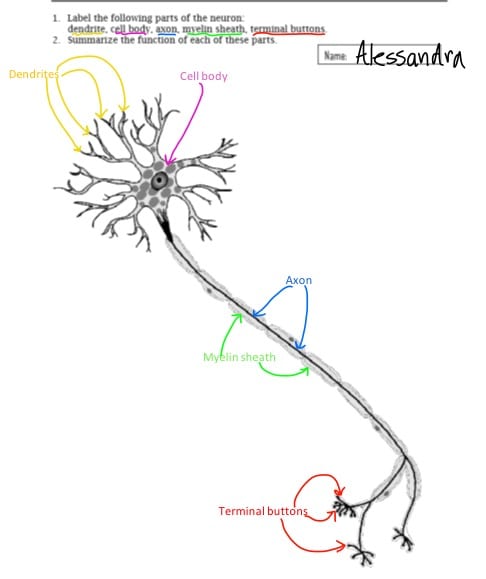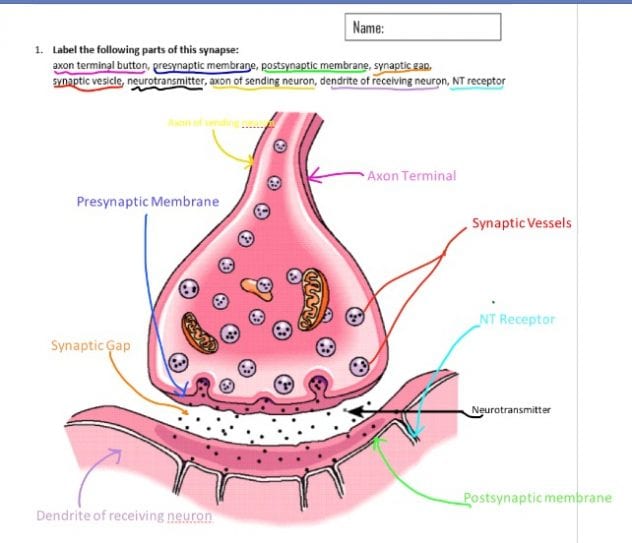Our brain and nervous system essentially consist of neurons. Neurons are individual cells that communicate information through your body and also within our brains. The nerve cells can be separated into three categories ; motor neurons, sensory neurons, and interneurons.
Neuron Structure
Each nerve cell has a dendrite, myelin, axon, cell body, synaptic endings/terminal buttons, and nucleus.
Provided by the Administrative Education System
Provided by the Administrative Education System
Neuron Function
Messages are passed along the axon in the form of action potential. This action potential is a neutral impulse which carries information along the neutron, this travels down the axon one section at a time. This keeps happening until it reaches the end of the axon. This is how neurons talk to themselves.
Synapse Structure
The structure of the synapse consists of the axon terminal button, presynaptic membrane, postsynaptic membrane, synaptic gap, synaptic vesicle, neurotransmitter, axon of sending neurons, a dendrite of receiving neuron and neurotransmitter receptors.
Provided by the Administrative Education System
Synapse Function
A nerve end of a neuron is triggered to release chemical messengers (neurotransmitters) from the axon. These chemicals flow across the synaptic gap and bind with NT receptors on the postsynaptic membrane of the other neuron. If the adjacent receiving neuron receives enough neurotransmitters a follow-up action potential is initiated along its membrane and a communication is “successful”. This is how neurons talk to each other.
Sources
The Psychology Textbook



Leave a Reply